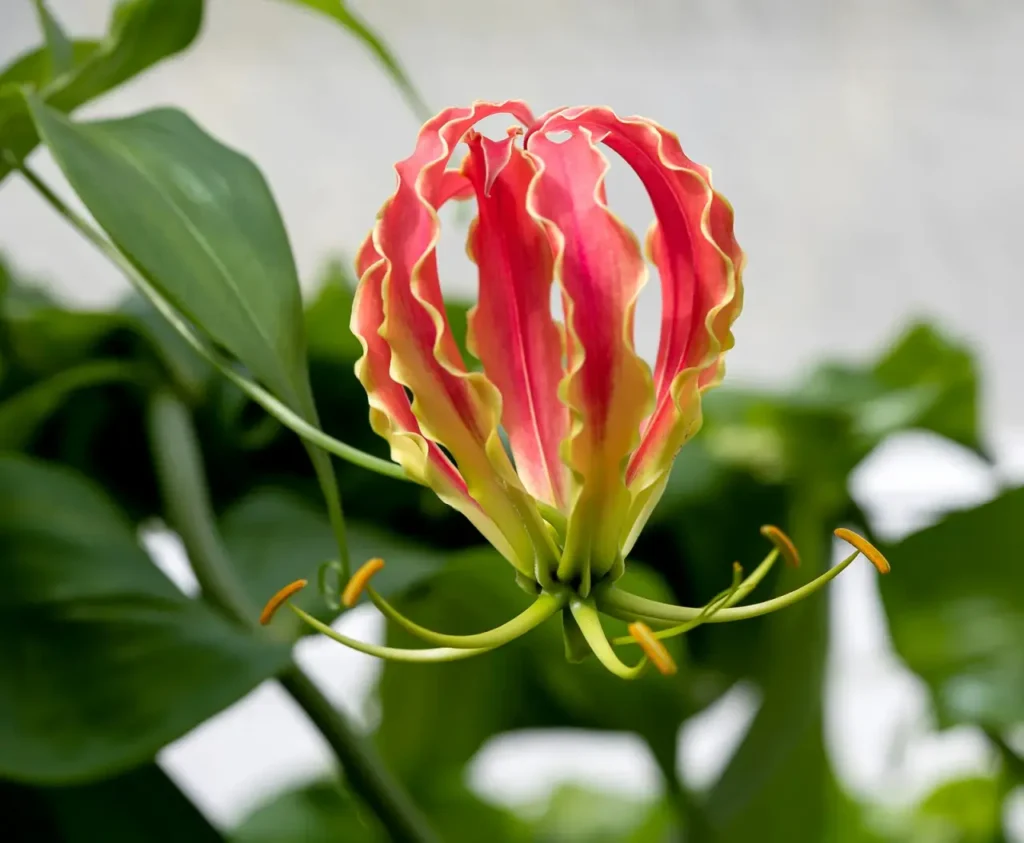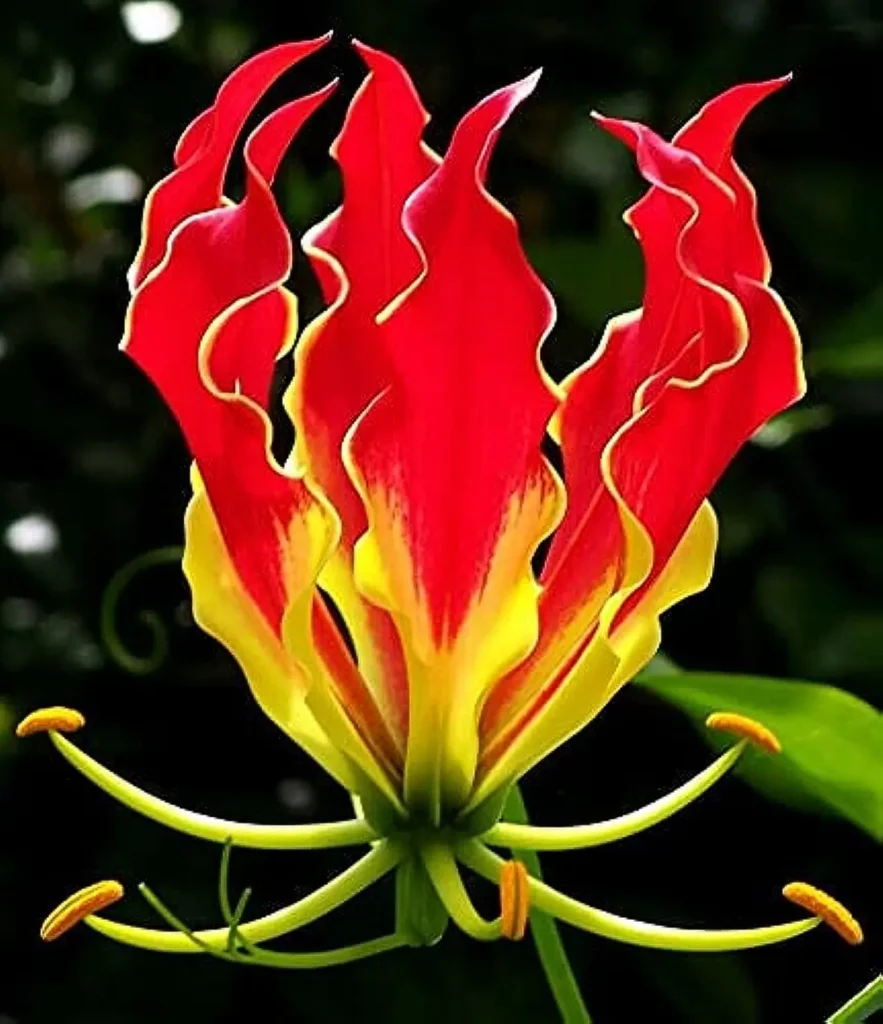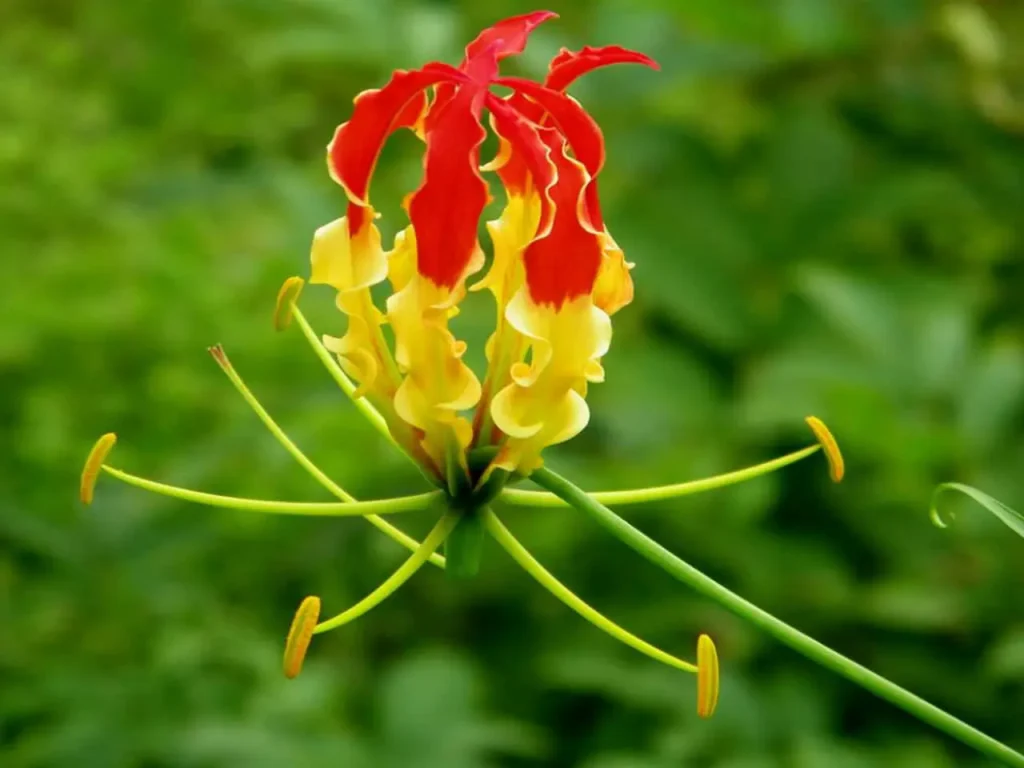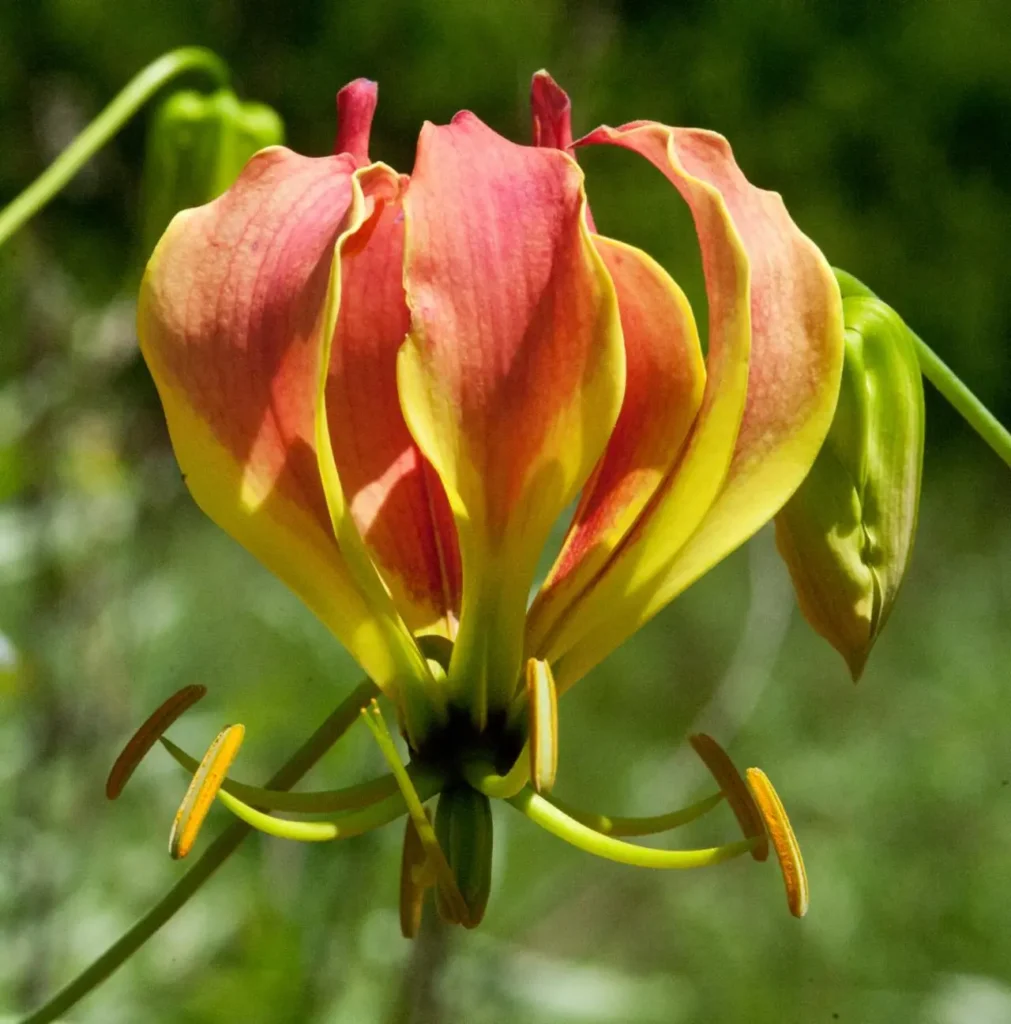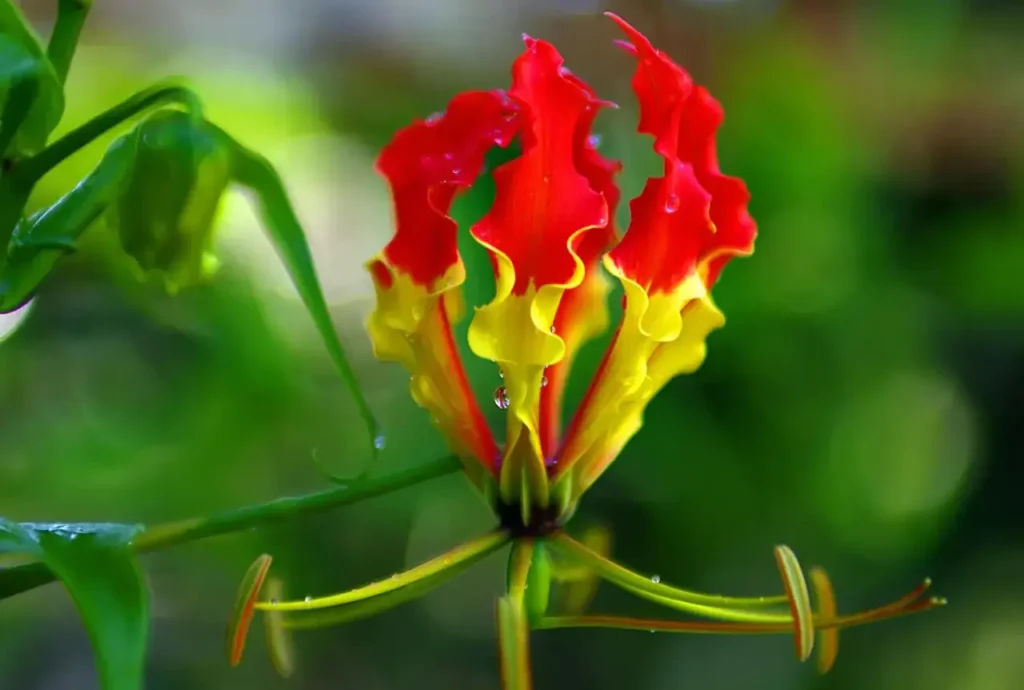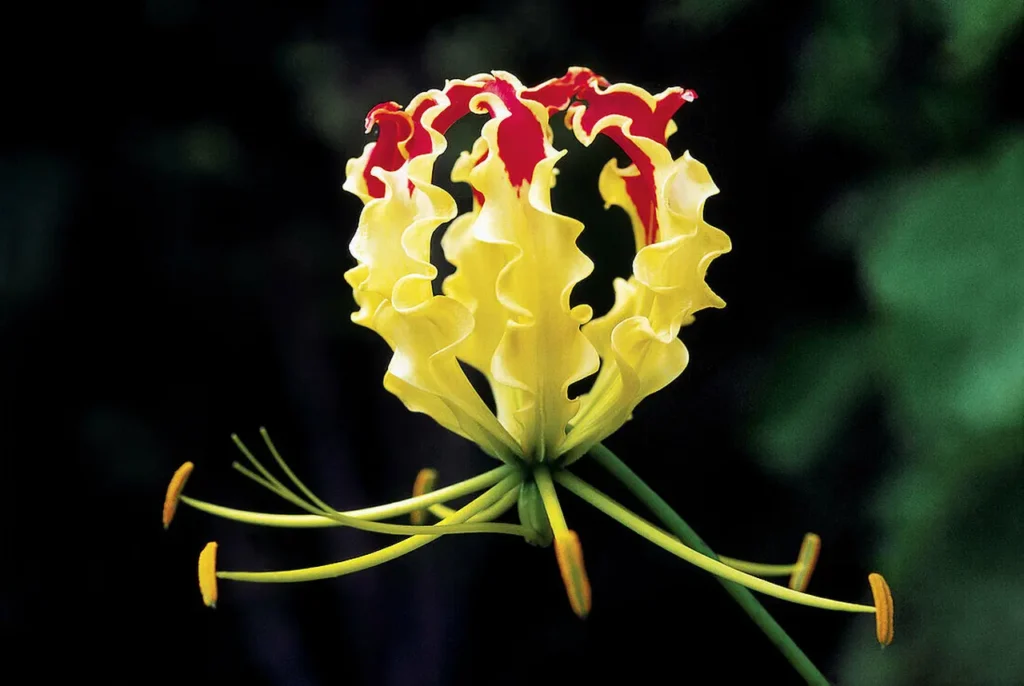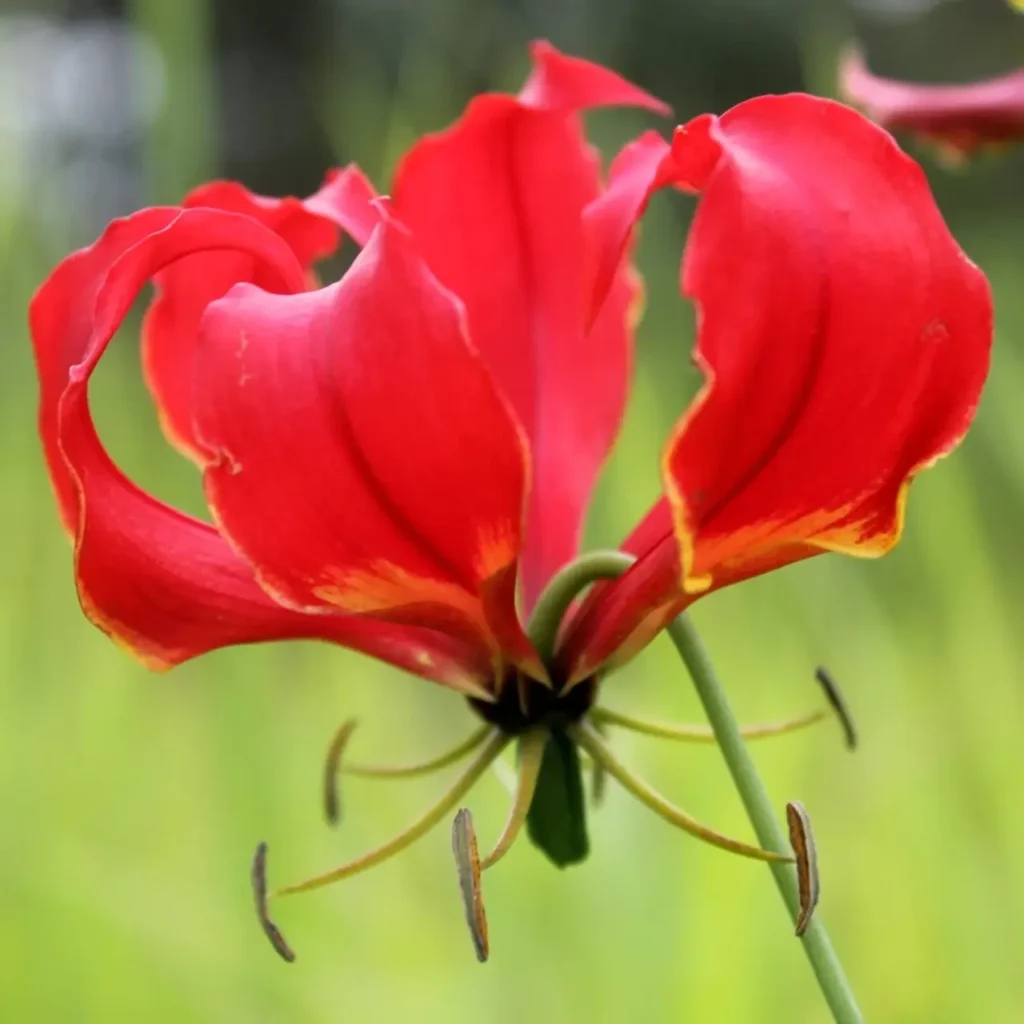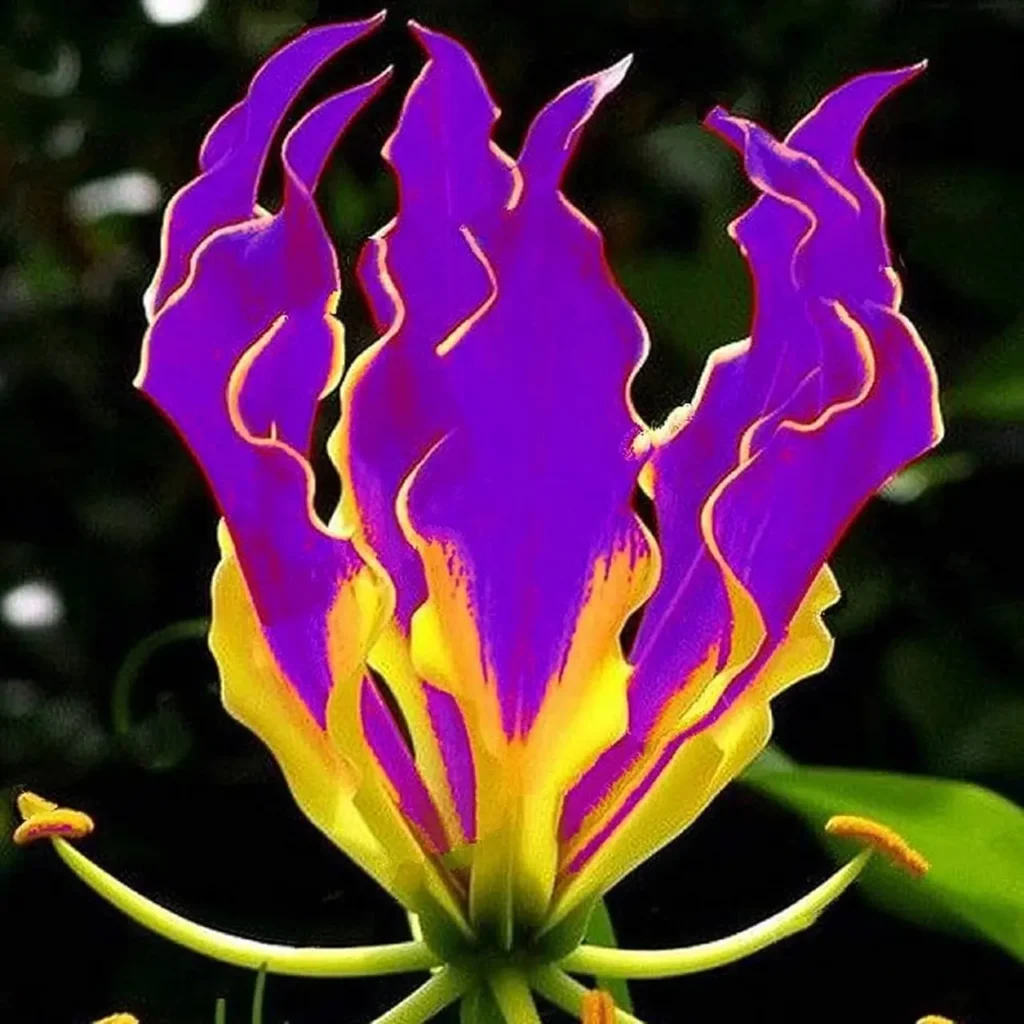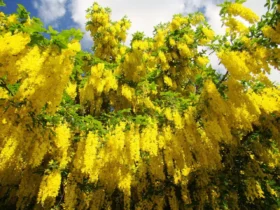In the tropical landscapes of Africa, Asia, and the Indian Ocean islands, a captivating and enchanting flower blooms—the Gloriosa superba, commonly known as the Flame Lily or Glory Lily. With its dazzling display of fiery red and yellow hues and its cultural significance in various regions, this striking flower has earned its place as one of the most admired and sought-after species in the botanical world. Let’s explore the enchanting world of Gloriosa superba and discover the remarkable qualities that make it a true gem of the floral kingdom.
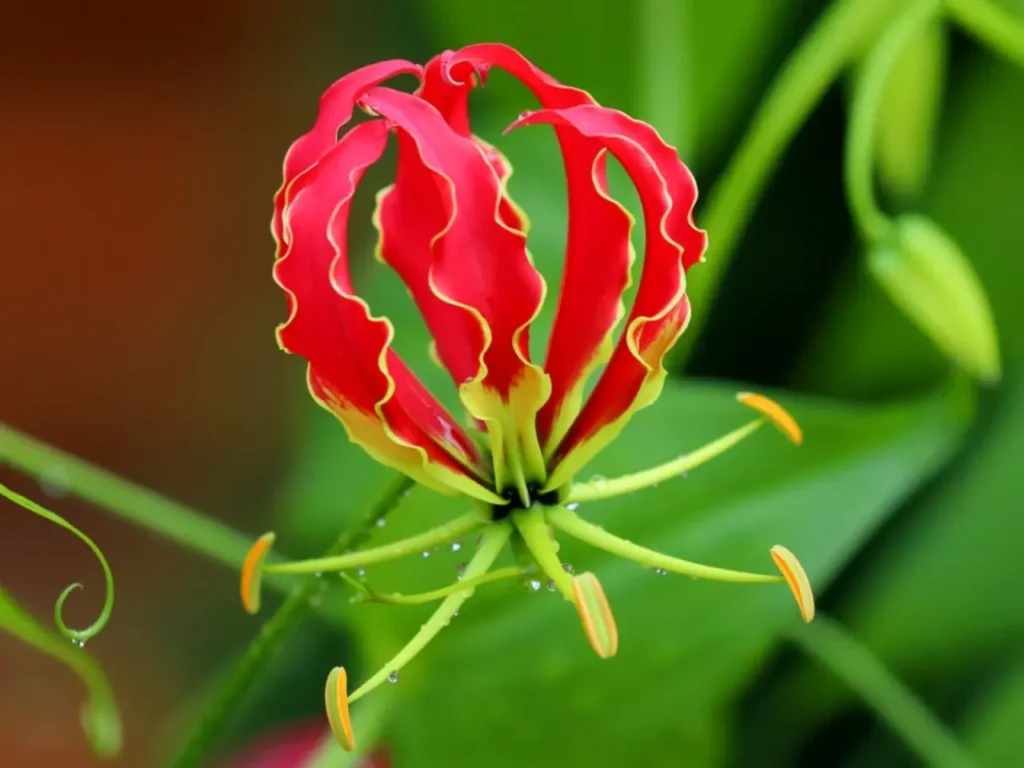
Appearance and Characteristics
Gloriosa superba is a climbing perennial herbaceous plant with striking and unique features. Its vibrant flowers display a mesmerizing blend of bright red and yellow hues, resembling flames, hence its common name, the Flame Lily. The flower petals are long and wavy, creating an elegant and dynamic display.
The plant’s leaves are elongated and lance-shaped, with a glossy appearance and a tendril-like structure that allows it to climb and wrap around supporting structures. The leaves also possess a deep green color, complementing the fiery blooms.
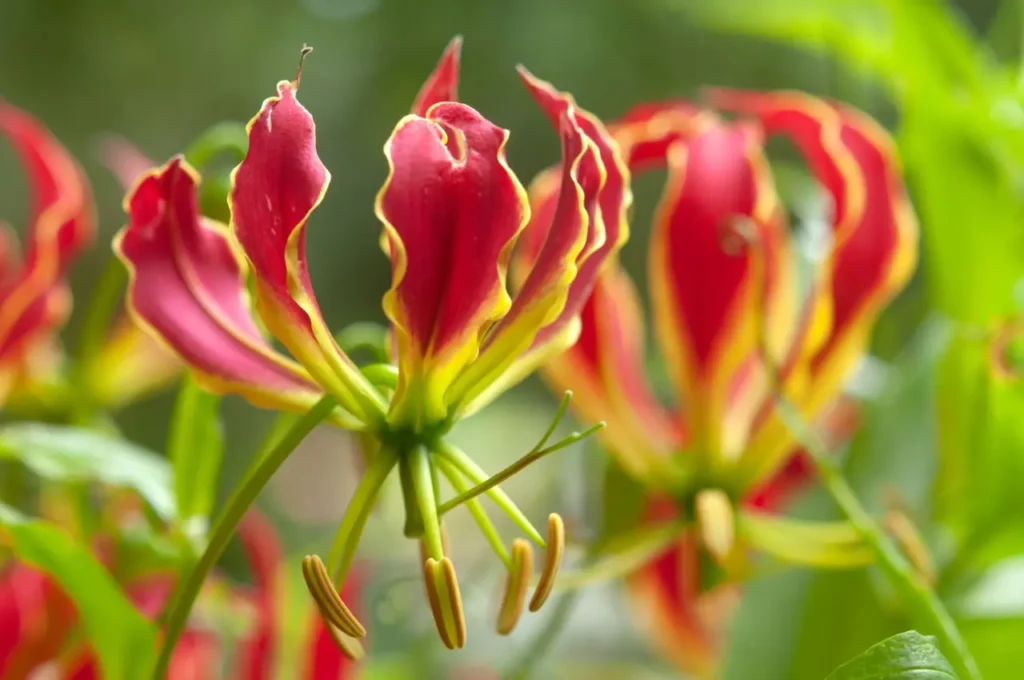
Habitat and Distribution
Gloriosa superba is native to a wide range of regions, including various countries in Africa, Asia, and the Indian Ocean islands. It thrives in tropical and subtropical climates, particularly in open woodlands, savannas, and grasslands. The Flame Lily prefers well-drained soils and abundant sunlight, making it a common sight in the wild during the blooming season.
Due to its captivating appearance and popularity as an ornamental plant, Gloriosa superba is also cultivated and grown in gardens and greenhouses worldwide.
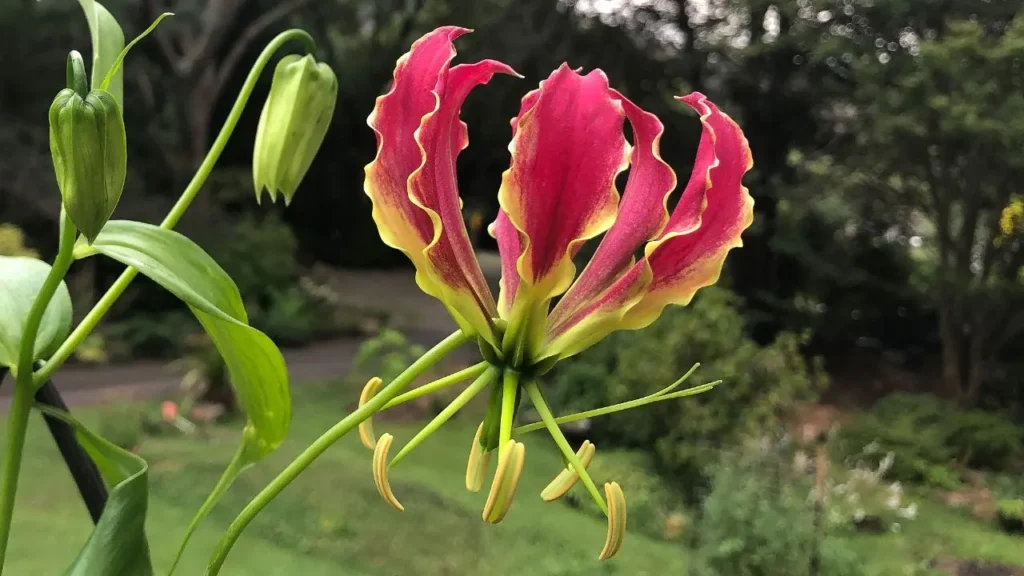
Cultural Significance and Symbolism
The Flame Lily holds cultural significance and symbolic meanings in various regions where it grows. In some African cultures, the flower is associated with good luck, prosperity, and renewal, making it a popular choice for decorations and festive occasions. Additionally, the Flame Lily has been used in traditional medicine for its purported medicinal properties.
However, it is essential to note that all parts of the Gloriosa superba plant are toxic if ingested and should not be used for self-medication. The plant contains alkaloids, such as colchicine and colchicoside, which can be harmful or fatal if consumed.
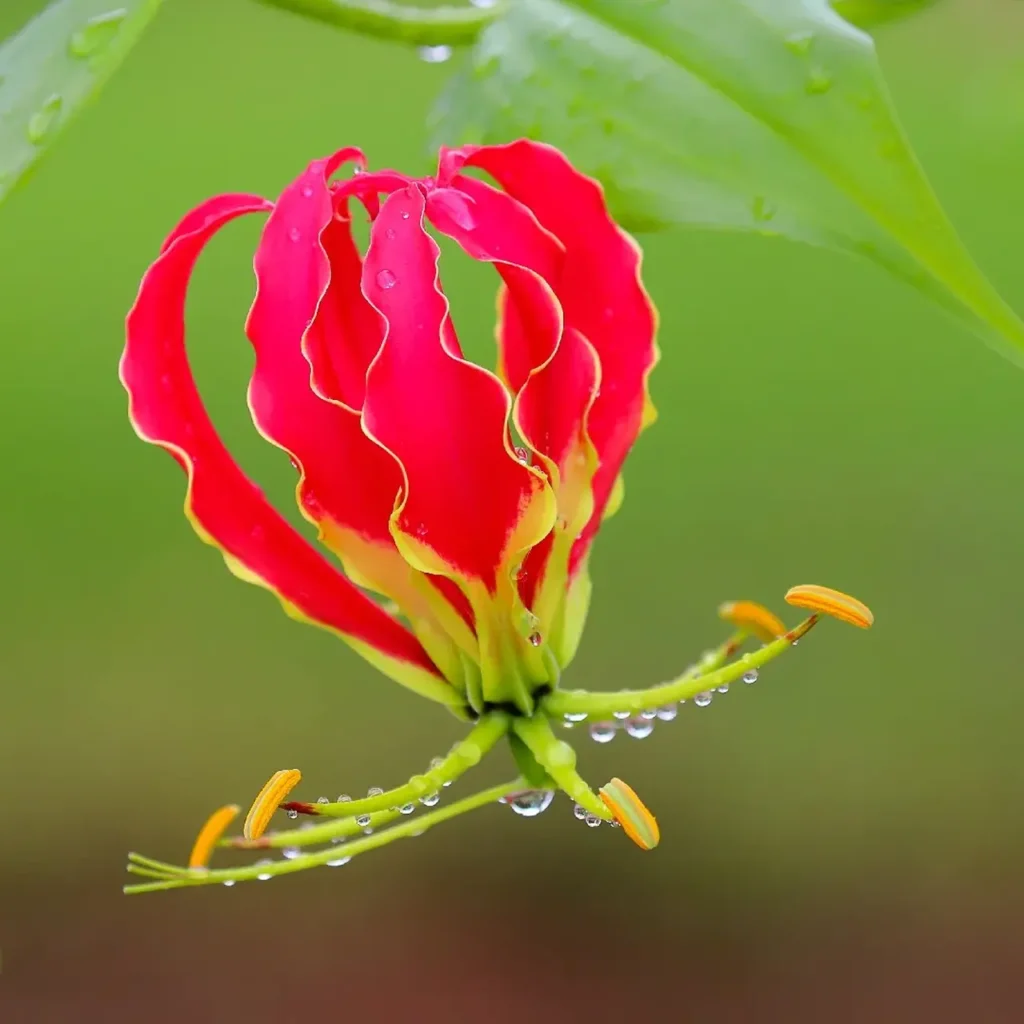
Horticulture and Conservation
Gloriosa superba is also highly valued as an ornamental plant in horticulture. The striking beauty of its fiery blooms and its climbing habit make it a favorite choice for trellises, fences, and garden structures. Cultivating Gloriosa superba requires specific care and attention, as it is a delicate and sensitive plant.
In the wild, Gloriosa superba faces threats related to habitat loss, deforestation, and over-harvesting for its ornamental value. Conservation efforts aim to protect its natural habitats and promote responsible horticultural practices to ensure the sustainability of this remarkable flower.
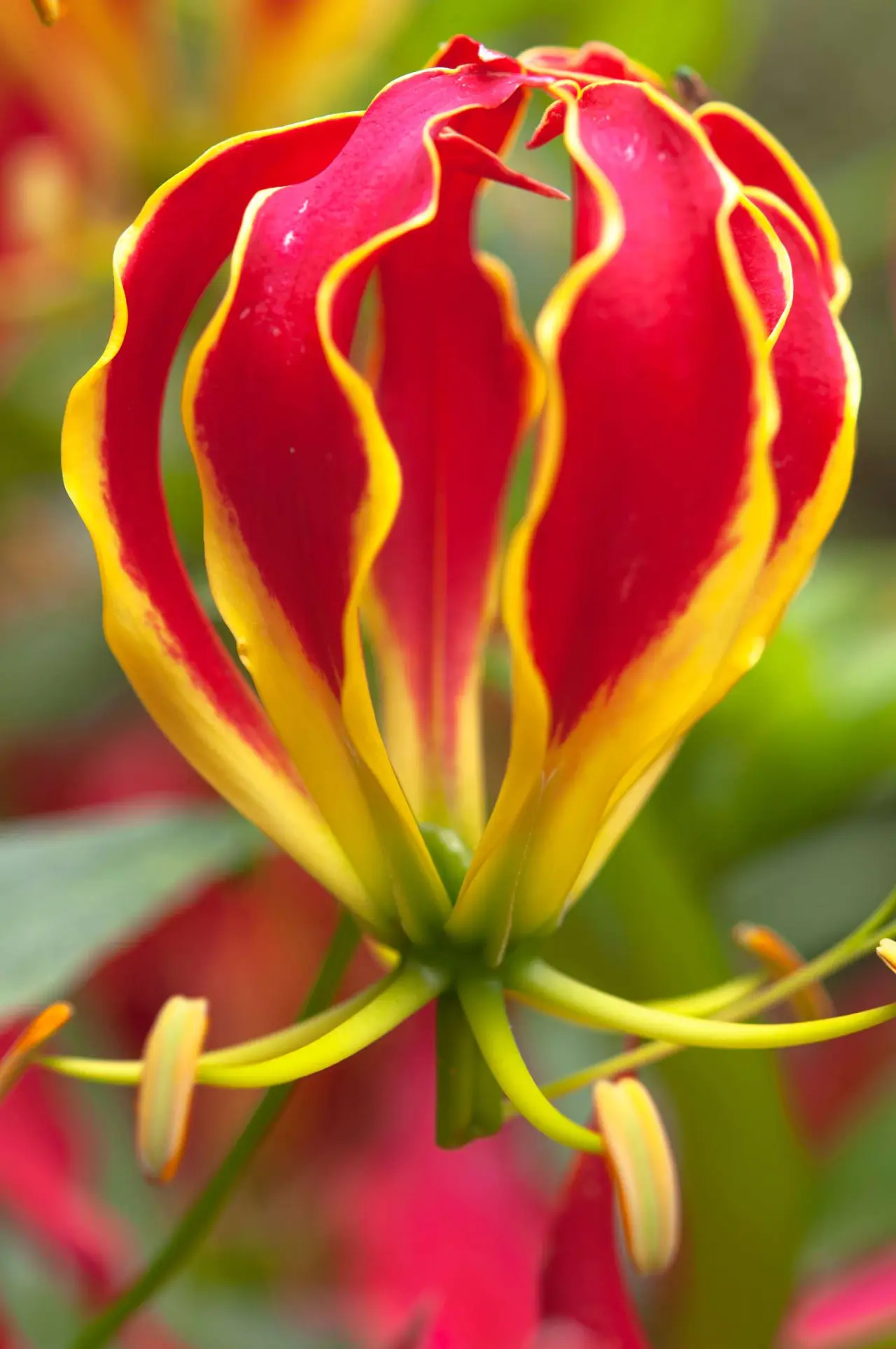
A Fiery Marvel of the Flora Kingdom
Gloriosa superba, the Flame Lily, stands as a fiery marvel of the flora kingdom—a captivating testament to the beauty and diversity found within the botanical world. As we celebrate the enchanting allure of Gloriosa superba, we are reminded of the precious treasures that nature holds within its embrace.

By cherishing and protecting this enchanting flower and its natural habitats, we ensure that future generations can continue to marvel at the fiery splendor of the Flame Lily—a true gem of the floral kingdom, adding a touch of tropical brilliance to the world’s rich tapestry of plant life.
